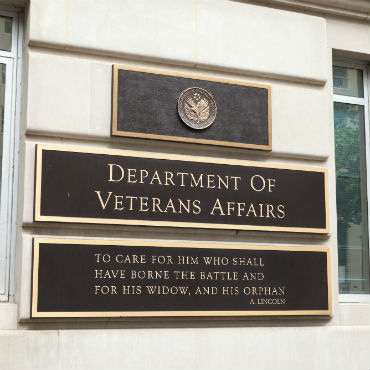Why VA's Cerner deal will cost $10 billion

The program officer in charge of the Department of Veterans Affairs shift to a commercial electronic health record offered some insight into the complexities of the move at a House hearing.

Senior officials at the Department of Veterans Affairs confirmed at a House hearing that the implementation of the Cerner electronic health record system and the phase-out of the homegrown Vista system would cost $10 billion and take 10 years.
The figure, first reported by FCW in a Nov. 9 story, represents something of a discount over the $4.3 billion contract awarded by the Department of Defense to Cerner for a modernized electronic health record, when you take scale into account.
The scope and scale of the effort seemed to stun new member Rep. Greg Gianforte (R-Mt.), a business executive with an IT background who joined the House after a special election to fill the seat formerly held by Interior Secretary Ryan Zinke.
"Having been through a lot of sales cycles on the software side, if I had walked into a boardroom and asked for $10 billion and 10 years before we could get a system deployed, honestly I would have gotten laughed out of the boardroom. It's difficult to fathom it could take that long," Gianforte said.
Acting VA CIO Scott Blackburn said, "This is going to be the largest implementation … ever" of an electronic health care system.
John Windom, the retired Navy captain who led the Defense health record procurement and now heads the VA's effort, tried to put the numbers in context. The VA is three times larger than the Department of Defense, when looking at number of facilities, patient population and the number of medical professional. VA has more than 100 legacy interfaces , Windom explained, while DOD only required the migration of data from 25 to 27 such applications. While Windom declined to break down planned costs when it comes to licensing, professional services and other factors, he said that "complexity is four times larger" than what the DOD faces in its implementation.
The contract to Cerner has yet to be awarded, which is why Windom and others said that contracting law inhibited them from offering cost breakdowns for members of the IT Subcommittee of the House Oversight and Government Reform Committee at the Dec. 7 hearing. The VA is still waiting on House and Senate appropriators to approve a transfer of funds between VA accounts in order to sign the contract.
Blackburn also reported that acting federal CIO Margie Graves checked off 11 items on a CyberStat audit of VA, although FCW was not able to learn precisely what those items were. Blackburn also acknowledged that the VA was not where it wanted to be when it comes to data center closures, as required by the Federal IT Acquisition Reform Act legislation, but that the move to the Cerner system, which has its own data infrastructure, could help VA on that front.
Windom cautioned, however, that Vista is going to be around for a while as the Cerner system is put in place.
"We are going to make sure that data is where we want it to be and usable before we shut anything down," Windom said, pointing out that patient care could be impacted if data isn't available.
He also tried to assure the panel that system data is going to be interoperable between DOD and VA from day one. Information from the read-only Joint Legacy Viewer that shares information between the DOD and VA isn't going to be directly input into the Cerner.
"That data is being reconciled such that we have transactional capability to move data, to process data between DOD and VA," Windom said.
The scope of that is daunting, as subcommittee chairman Rep. Will Hurd (R-Texas) learned in his questioning. There are more than 130 instances of Vista, which was developed with the philosophy of favoring local autonomy over central control. That means there are more than 130 different VA health record datasets that have to be processed in the way Windom described.
"That's crazy," Hurd said.
The VA is also tapping the White House Office of American Innovation to solve the problem of interoperability between the unified DOD-VA system under Cerner with other private sector systems. There are existing programs in place to promote interoperability between commercial electronic health record systems run out of the Office of the National Coordinator for Health IT at the Department of Health and Human Services, but these are voluntary, stakeholder driven and not designed to product top-down standards.
"That solution does not exist right now," Blackburn explained. "That would be a longer term goal for our country, so it would be completely seamless. And that's actually a problem we're working with the White House on."
NEXT STORY: GSA Plans to Democratize Its Data



